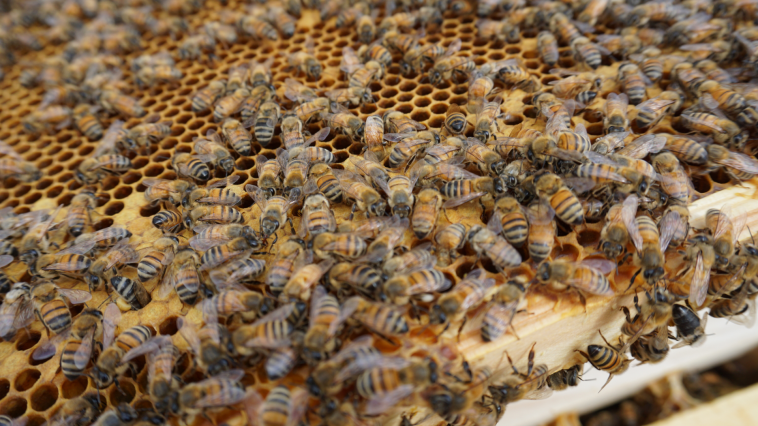When farmers use their raw products produced on the farm to make refined products that can be sold to the retail or wholesale markets, they add value to their products and boost their profits. In this article series, we aim to illustrate how farmers can add value to their raw products. In part eight of the series, we focus on the production of raw and strained honey.
Raw honey
Raw honey refers to honey as it exists in the beehive and that has been obtained by extraction, settling or straining, without the addition of any kind of heat to the product. This type of honey contains some pollen and may even contain small fractions of beeswax.
Harvesting
Harvesting is the manual or mechanical removal of a food product from its natural source or parent plant. Honey may be collected from domesticated beehives or from wild bee colonies. The honey is collected by using a bee smoker to pacify the bees, so that the honeycomb may be removed from the hive. The bee smoker causes the bees to attempt to save the gathered food resources in the hive from a possible threat, such as a fire, and makes them far less aggressive. The honeycomb can then be removed from the hive. The beekeepers must provide the bees with a honey substitute, such as sugar water (during the autumn months) or crystalline sugar (during the winter months) after the honey has been harvested from the hive so that the hive does not starve.
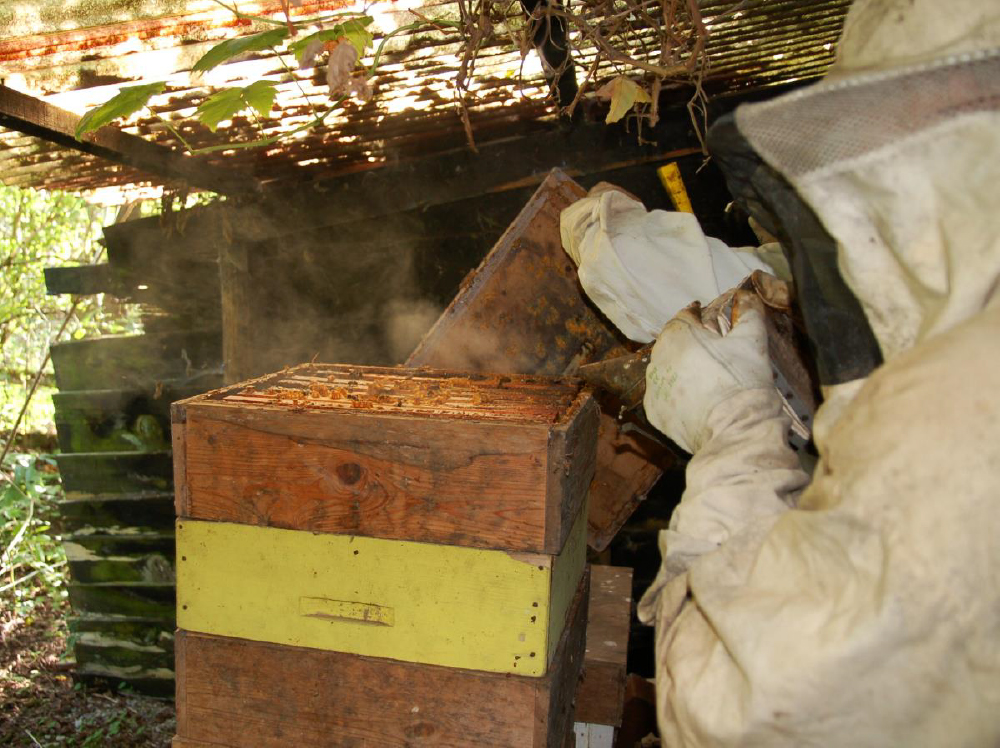
Using a bee smoker to pacify the hive.
Extraction
Extraction is the separation of various fractions or specific components from food products required for further processing.
The honey is extracted from the comb using a sharp, heated knife, a vat, and the honey extractor. The area (room) used for honey extraction must be well lit, dry, and be supplied with all the necessary sanitary measures.
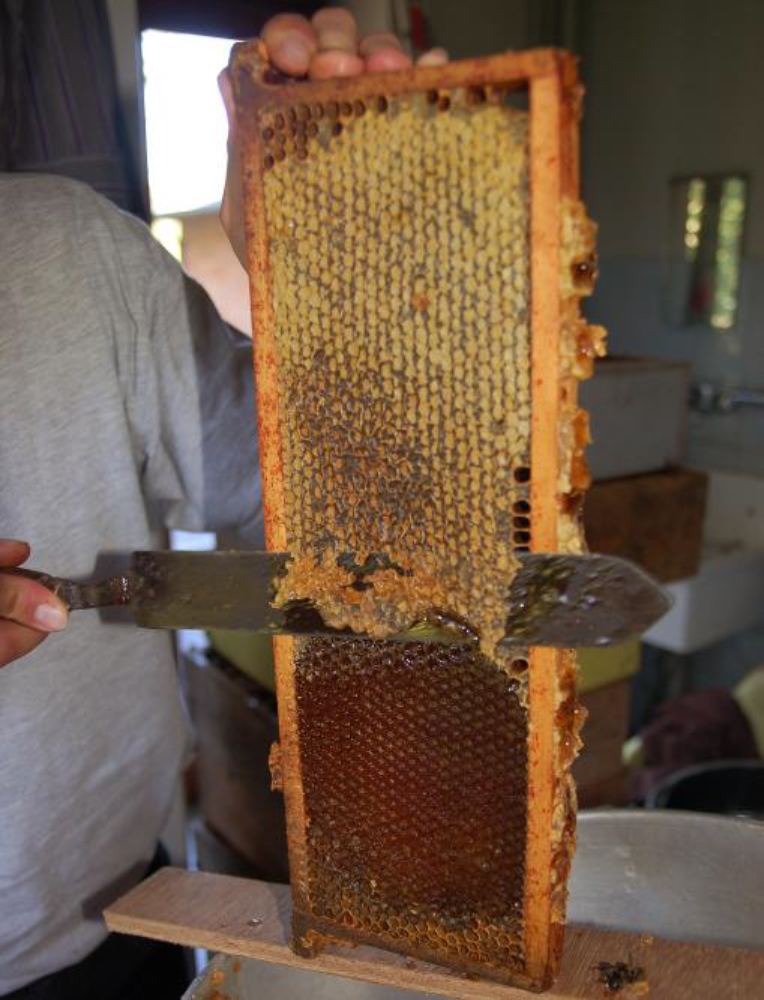
Uncapping the cells with a heated knife.
The vat used in the extraction process should preferably be made of steel and must incorporate a small basket with a 2 mm mesh net and a container for harvesting the honey. The honey extractor is basically a centrifuge with a capacity of between 15 and 60 combs.
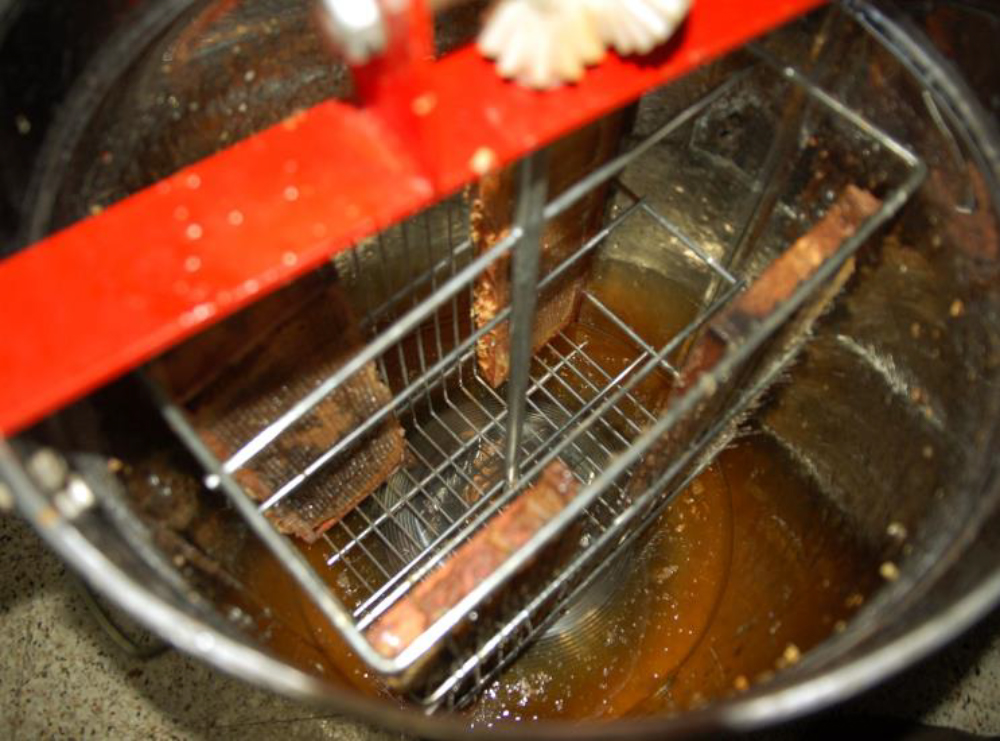
Honey extractor.
Filtration
Filtration is the separation of solid, haze-forming substances or even bacteria from the liquid fraction of food by means of a filter. After separation, the honey is filtered through a special sieve to remove impurities such as fragments of honeycomb and pollen.
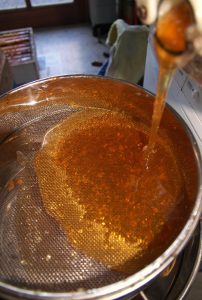
Strained honey
Strained honey is produced by passing it through a mesh that removes particulates without removing pollen, minerals, or enzymes.
Bottling
Bottling involves preserving and sealing the product in a glass bottle.
Honey must be kept free of air and for this reason, the containers used to store it must have covers that ensure airtight closure. Containers made of metals such as zinc and copper should be avoided in the bottling of honey. Containers made of iron may be used, provided that they are lined and treated with a food-quality lacquer.
Other containers which were previously used for the preservation of foodstuffs other than honey should also be avoided as these containers may contaminate the honey with pre-existing odours.
The most suitable containers are glass or stainless-steel containers as these types of materials avoid the formation of off-odours and toxic compounds in the honey.
For wholesale use, containers with a capacity of 300 kg are preferred; for small producers, a capacity of between 30 kg and 32 kg is sufficient; for family use containers of between 25 g and 500 g capacity is best suited, and for the catering industry containers with a capacity of 10 g are used.
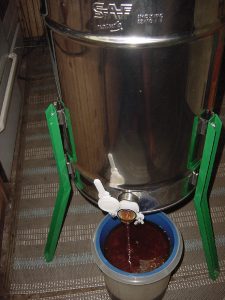
Storage
The product is kept under controlled conditions for a specific length of time until further use. Honey must be well stored to prevent it from undergoing chemical and biological changes which reduce the nutritive value of the product as well as its sensory characteristics. Most types of deterioration result from fermentation of the honey which causes chemical modification (formation of ethyl alcohol, carbon dioxide and acetic acid) and deterioration in taste and changes in appearance such as whitish streaking and foam.
Avoid the following factors to prevent fermentation:
- High degree of humidity;
- High concentration of enzymes;
- Temperature of 20°C and higher.
Published with acknowledgement to the ARC Agricultural Engineering for the use of their manuals. Visit www.arc.agric.za for more information.
Literature sources:
- Encyclopaedia of Food Science, Food Technology and Nutrition: R Macrae, RK Robinson, MJ Sadler: Academic Press: 1993: Vol. 4 p2382-2387, p3438, p3442-3445
- http://en.wikipedia.org/w/index.php?title=Honey&printable=yes
- http://www.honey.com/honey-at-home/learn-about-honey/honey-varietals
- Encyclopaedia of Food Science, Food Technology and Nutrition: R Macrae, RK Robinson, MJ Sadler: Academic Press: 1993: Vol. 4 p2382-2387
- http://en.wikipedia.org/w/index.php?title=Honey&printable=yes
- http://www.honey.com/honey-at-home/learn-about-honey/honey-varietals

